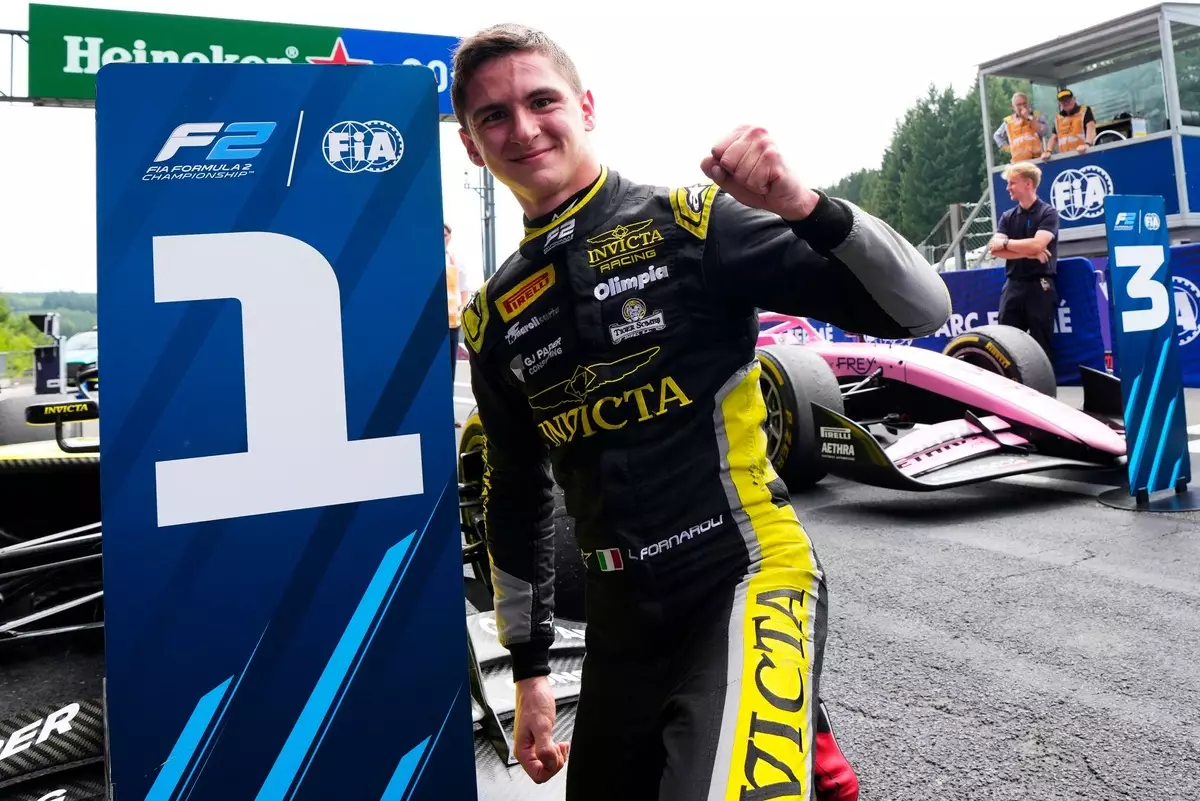In the high-stakes universe of motorsport, where talent often follows a well-trodden path, Leonardo Fornaroli emerges as an anomaly—an outstanding driver perched atop the Formula 2 standings without the backing of a prominent Formula 1 academy. This stark contrast to the norm underscores not just his extraordinary skill but also highlights a deeper shift in the talent scouting landscape of motorsport. Critics and team principals alike are beginning to question the traditional pipeline that pigeonholes drivers into F1 through well-established development programs. Fornaroli’s ascent challenges these conventions, hinting at a more meritocratic route driven by raw consistency, mental resilience, and adaptability.
While most young drivers cultivate their reputations through early success, Fornaroli’s trajectory has been remarkably understated yet effective. Winning the Formula 3 title without clinching a single race during his championship campaign in 2022—with a strategy of consistency over flamboyance—set the foundation for his current ascendance. Despite the lack of rapid race victories, his steady pace and ability to execute under pressure have propelled him to the top of a fiercely competitive field. His recent race performances, especially at prestigious circuits like Silverstone and Hungaroring, reveal a mature driver who has refined his craft in the face of skepticism and expectations.
This unconventional pathway invites reflection on what qualities teams truly value in future F1 stars. Fornaroli’s story underscores that talent isn’t solely measured by spectacular wins but also by the capacity to perform reliably over multiple laps, adapt tactically, and maintain calm amidst chaos. His silent, understated approach within the F2 paddock suggests that there are qualities, often overlooked in the media-driven frenzy of flamboyant personalities, that are equally crucial in F1—the ability to develop a car, provide stable data, and push with unwavering consistency.
The “Moneyball” Effect in Modern Motorsport Recruitment
James Robinson, Invicta’s team principal, doesn’t mince words when describing Fornaroli’s prospects. His comparison of the Italian driver to a “Moneyball” candidate—a term borrowed from baseball’s statistics-driven recruitment—captures a revolutionary approach to driver selection that could redefine how F1 teams identify talent. Robinson emphasizes that Fornaroli excels in what may be considered the subtle art of racing: consistent lap execution, mental resilience, and data-driven performance. Unlike drivers who rely on raw aggression or media charisma, Fornaroli’s value lies in reproducible, mistake-free racing.
Robinson’s insights are a testament to an evolving paradigm. In an era dominated by analytics, teams crave drivers who can produce measurable, stable results—drivers who are not just fast but reliable, and whose driving can accelerate development processes for car engineers. Fornaroli embodies these qualities; his ability to maintain steady pacing under pressure, exemplified by dominant wins like Spa and Hungary, illustrates a mastery of racing fundamentals that many overlook amidst the spectacle.
This shift to a “Moneyball” mindset questions deeply embedded biases in traditional talent scouting, which often favors personality, branding, or a series of flashy victories. Robinson’s praise indicates a deliberate move toward valuing substance over style—favoring players capable of consistently delivering the nuanced, technical feedback that enhances car development. If F1 teams embrace this more analytical, function-focused approach, Fornaroli’s profile could become an archetype for future drivers—quiet, consistent, and immensely effective.
The Paradox of Understated Excellence
Fornaroli’s journey also speaks to an intriguing paradox: excellence often doesn’t shout loudly. His understated personality, coupled with a racing style that relies on precision rather than spectacle, potentially hinders his immediate recognition. In an environment where media presence and charismatic displays tend to overshadow technical competence, Fornaroli’s focus remains solely on performance. It’s a strategy that could either accelerate his rise or, paradoxically, delay it—depending on whether F1 teams prioritize visibility over the virtues of consistency.
His recent race wins serve as a powerful rebuttal to those who might dismiss the quieter route. The fact that he has secured three victories this season, contrasting with a winless F3 campaign, demonstrates significant growth and adaptation. It also suggests that true talent can manifest in subtle ways, often under the radar, until the driver’s skills collectively reach a tipping point. Fornaroli’s evolving maturity signals that perseverance, combined with mental robustness, can produce results that overshadow flashier, more charismatic rivals.
Yet, what remains striking is the apparent oversight in the current F1 landscape. Despite his achievements and the strategic finesse he demonstrates regularly, Fornaroli remains without a firm contract or a place within a top-tier team’s development program. This discrepancy raises questions about the criteria that teams use to select drivers—are they overly reliant on traditional markers like racing pedigree, social media presence, or F1 academy affiliations? Or are they slow to recognize value in drivers who develop gradually but possess the stability and skill crucial for F1 excellence?
The Future of Talent Identification: A New Paradigm
If motorsport continues down this path of analytics-led recruitment, Fornaroli’s rising stock is likely only the beginning. His case exemplifies a broader movement toward data-driven evaluations, which favor drivers who can deliver consistent results and contribute meaningfully to car development. This approach not only sharpens the focus on quantifiable performance but also democratizes opportunities, enabling drivers outside the traditional pedigree to showcase their worth.
What’s compelling is the potential for this methodology to alter the landscape entirely. Instead of relying heavily on the subjective judgments of team personnel or the prestige of academic affiliations, F1 could pivot toward metrics—lap times, error rates, tire management, and adaptability under various conditions—that reveal a driver’s true potential. Such a shift would benefit drivers like Fornaroli, whose calm, calculated racing style masks a formidable talent capable of elevating a team’s technical progress.
The question remains: will F1 teams recognize the strategic advantage of cultivating a diverse talent pool grounded in consistency, rather than spectacle? If so, Fornaroli could find himself at the forefront of a new era—one where raw talent combined with analytical prowess becomes the gold standard. His story challenges existing norms and invites teams to look beyond the superficial, embracing a more sophisticated, data-oriented view of driver potential.
As the motorsport world watches, the real test will be whether Fornaroli’s quiet excellence propels him into the F1 ranks. His remarkable journey underscores that sometimes, the most powerful signals are the ones that go unnoticed—that in the quiet pursuit of perfection, future champions are quietly born.


Leave a Reply